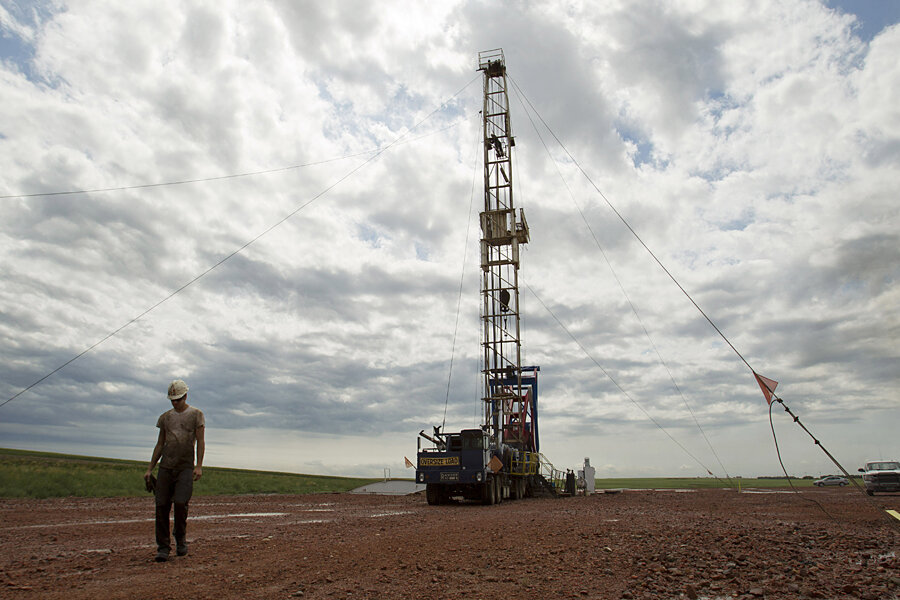What falling oil prices will mean for state budgets
Loading...
Oil prices are dropping…fast. This may be good news for drivers but not so good for a handful of states that use energy tax revenue to help fund their budgets. It may be especially challenging for states that rely on taxes from production of shale oil that uses methods that may be practical only at high prices. It costs $60 to $70 to produce a barrel of shale oil, leaving little margin once the price of crude dropped to the $75 range in November. Of course, the success of the controversial hydrofracking method which has opened up vast new reserves is one reason oil prices are so low.
On the positive side, with gas prices at a four year low, consumers have extra money in their pockets just in time for the holiday shopping season: more shopping means more state sales tax collections. If more travelers take to the roads, those long trips will also boost motor fuel tax collections (remember, gas taxes are generally fixed, and not tied to pump prices).
Low crude oil prices also lower the costs of surface transport, both rail and truck. Unfortunately, low prices may also boost short-term consumption of fossil fuel and may make buying gas-guzzlers more attractive.
Energy states will be affected in different ways, depending in part on how well they’ve projected prices—always a risky game. Among states that rely heavily on oil severance taxes, price forecasts for the current fiscal year range from $80 to $105 per barrel, depending on when the forecast was made.
Those states that projected prices on the low end should be able to manage without having to redo their 2015 budgets. For instance, North Dakota only publishes forecasts for the biennial budget and has not updated its projections since 2012. As a result, it’s forecasting $80-a-barrel oil and has built up over $5 billion in variousreserve funds
Kansas revised its estimate this month, down to $80. Because its budget was based on the spring estimate of $85, it now expects to get about $9 million less than forecast. That’s a real problem—after large tax cuts, the state needs all the revenue it can get. Louisiana also revised the price down from $96 in May to $82 in November. This reduces energy revenues by $50 million in 2015. Other states forecast even higher prices, which could thrust their budget into disarray. Alaska, for instance, budgeted based on $105-a-barrel oil.
State |
Date of Forecast |
Price ForecastFiscal Year 2015 ($ per Barrel) |
| North Dakota | December 2012 | $80 |
| Texas | December 2013 | $87 |
| Alaska | April 2014 | $105 |
| New Mexico | August 2014 | $92 |
| Wyoming | October 2014 | $85 |
| Louisiana | November 2014 | $82 |
| Kansas | November 2014 | $80 |
| Source: State reports (linked) | ||
Alaska will be the big story to watch following outgoing Governor Sean Parnell’s controversial energy tax change, which escaped a repeal attempt last August. Before Parnell, Alaska used a model implemented by former Governor Sarah Palin, called the Alaska’s Clear and Equitable Share Act (ACES)–a progressive tax with a low base rate that added surtaxes pegged to the price of oil. Parnell’s More Alaska Production Act (MAPA) has a base rate of 35 percent with no price triggers and significant credits for production.
When oil prices exceed about $90, the tax rate before credits is higher under ACES than under MAPA. But at lower prices, MAPA’s 35 percent flat rate is higher. With its budget based on $105 oil, Alaska already stood to get less revenue than expected, even with the boost from MAPA.
If lower oil prices reduce investment in production, energy state economies could suffer. Alaska, North Dakota, Texas, and Wyoming have socked away a lot of money, so their current year budgets are not in any danger. But if prices stay low and producers stop drilling new wells, the oil boom towns in North Dakota and similar states could disappear as quickly as they popped up. Oil producers may continue to pump existing wells, but there are fewer of the high paying jobs after the pumpjack starts and shale oil production falls offquickly if new drilling doesn’t sustain it.
Energy states can survive low prices, at least for a while. But a protracted downturn could begin to eat away at state budgets even as it puts more money in consumer’s pockets.
The post What Falling Oil Prices Will Mean for State Budgets appeared first on TaxVox.







